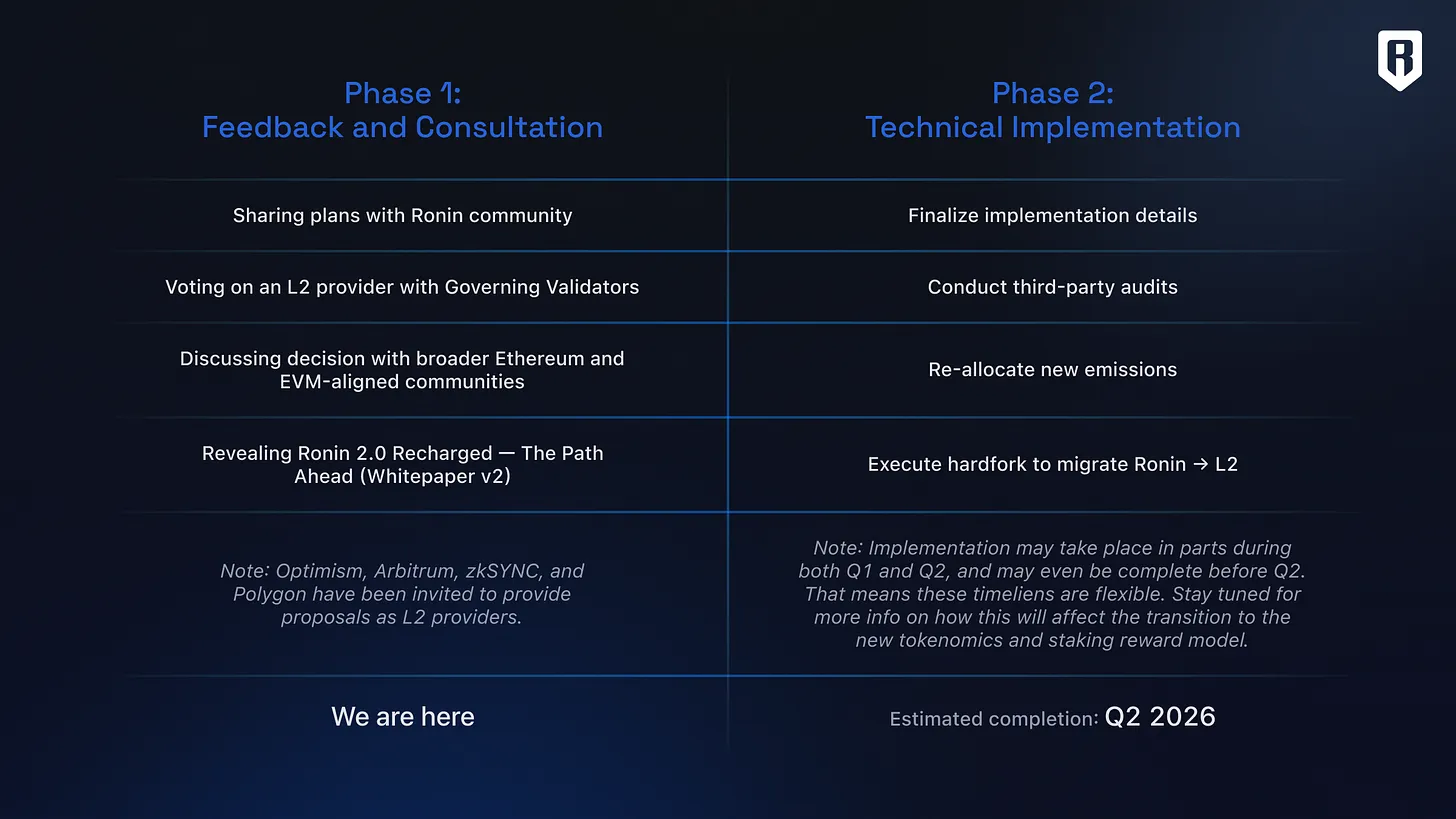Ronin was created by Sky Mavis, the company behind Axie Infinity. In 2021, the developers decided to separate from Ethereum due to its limited throughput and high transaction fees. A cross-chain bridge, Ronin Bridge, served as the link between the networks. However, in March 2022 the bridge suffered one of the largest exploits in the industry, with hackers stealing over $625 million. Operations were suspended and only resumed in July after a relaunch.
According to the developers, the environment has now changed: Ethereum has become faster and transaction costs have fallen significantly. “We are entering a new growth phase, and Ronin is ready to seize this opportunity,” the team wrote.
Once integrated as a Layer 2, Ronin is expected to evolve into a multifunctional network beyond gaming. Transactions will reportedly be processed up to 12 times faster, while benefiting from Ethereum’s security and decentralization.

Ronin migration roadmap. Source: Ronin blog.
The updated protocol will adopt a new consensus mechanism called Proof-of-Distribution. Staking rewards for the RON token will be distributed under this model.
The team also outlined several key reasons for returning to Ethereum:
- Ethereum Foundation restructuring has made the ecosystem more adaptable;
- the blockchain is attracting significant Wall Street attention and capital;
- the rise of DA-based solutions has improved access to Layer 2 adoption;
- Ethereum’s security will strengthen Ronin’s tokenomics and scalability.
“For us, this is a homecoming. This cycle has marked a turning point in institutional adoption of crypto, and we believe the gaming sector should also be part of this momentum,” the Ronin team stated.
As a reminder, in August 2024 more than $11 million in digital assets were drained from the sidechain, though the funds were later returned.
#PeckShieldAlert @Ronin_Network #whitehacked? or Hacked? (w/ ~ $9.33M) pic.twitter.com/wfaY0zhVdI
— PeckShieldAlert (@PeckShieldAlert) August 6, 2024

